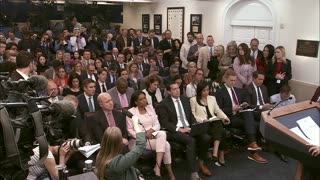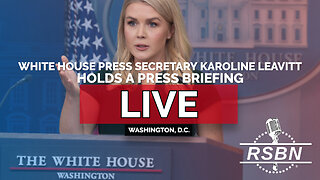Premium Only Content

Pakistaan And IMF | Details |
: Welcome to everyone in the room and to our viewers around the world to the press briefing on the April 2023 Global Financial Stability Report. I am Randa Elnagar of the IMF’s Communications Department.
Let me introduce our speakers today. Tobias Adrian, Financial Counsellor and Director of the Monetary and Capital Markets Department. Fabio Natalucci, Deputy Director of the Monetary and Capital Markets Department. And Charles Cohen, Deputy Division Chief of the Monetary and Capital Markets Department.
Before taking your questions, let me kick‑start our conversation today and turn to Tobias and ask him a few questions.
Tobias, a lot has happened since we last spoke in October, including the recent turmoil in the banking sector. How do you assess the global financial stability in light of the recent events?
So, we have seen turmoil in the banking sector in the U.S. and in Switzerland. And that really reflects the heightened vulnerabilities that have been building up over years of low interest rates. As interest rates are being raised, vulnerabilities are appearing. We saw that already last October, when we met here for the Annual Meetings, where we saw stress in the non‑bank financial sector in the U.K., more specifically, at that time; and we have seen it in March in the banking sector in the U.S. and Switzerland. There are certainly other vulnerabilities out there, and sharp adjustments in interest rates, sharp adjustments in expectations can trigger further stresses.
In the case of Switzerland, the government supported a merger between two banks which, again, stabilized the financial stability situation.
And, finally, in the case of the U.K., back in October, the Bank of England deployed targeted and time‑limited asset purchases to stabilize the LDIs that were under stress.
And so in all of these cases, basically, central banks could continue to tighten monetary policy because they had the tools to contain threats to financial stability. The Federal Reserve increased interest rates after the SVB episode. The Swiss National Bank increased interest rates after the Credit Suisse merger. And, of course, back in‑‑since October, the Bank of England has hiked interest rates since the LDI episode.
So this is really the playbook, you know, that is ideal. Where there are financial stability problems, use targeted tools to address those and continue to use your monetary policy to fight inflation. Inflation remains high, well above target in many countries. What is priced into markets at the moment is a relatively optimistic view about inflation going forward. Inflation is expected, is priced in by markets to come back down to targets fairly quickly. And while we certainly hope that this is going to be the case, there is certainly a risk around this outlook on inflation. Inflation could prove to be more persistent, which could lead to a reassessment of the path of policy for monetary policy. And, you know, that could, again, trigger certain financial sector instabilities. So vulnerabilities are certainly elevated, both in the banks and in the non‑bank financial sector.
Secondly, you referred, in rather friendly terms, to some of these bank bailouts. Don’t they run in‑‑don’t they fly in the face of the kind of rules which were set by the Financial Stability Board after the great financial crisis?
Now, in the case of, you know, Credit Suisse, that resolution regime was not being used; but I would argue that the outcome was fairly similar to what would have occurred under resolution. Of course, it’s always difficult to, you know, judge, in retrospect, those outcomes.
In terms of the U.S. banks, the systemic risk exemption was being used, and that does have a cost to the Deposit Insurance Fund. But, of course, the systemic risk exemption was created for these types of circumstances. So I think it was, again, successful in terms of containing, you know, any spread of loss of trust or withdrawal of deposits.
Now, you are asking about sort of like the costs and benefits. And absolutely, you know, going forward, I think there will be a debate about whether policy instruments, institutions can be designed to mitigate moral hazard even more. Right? You know, unfortunately, it is really difficult to entirely get rid of moral hazard, but you can minimize it as much as possible. I think the trade‑offs were reasonable in these situations. They were fairly contained; but, of course, to contain moral hazard even further is certainly a desirable policy outcome, while containing financial stability threats.
I would like to thank our speakers, Tobias, Fabio, and Charles. Also, thanks to you and to our viewers who joined us today. We would like to remind you of the release of the Fiscal Monitor tomorrow morning at 8 a.m. in the same room, and we have the regional briefings to answer your questions. Thank you very much.
-
 LIVE
LIVE
Tommy's Podcast
11 hours agoMMR & Operation Mockingbird | Dr. Robert Malone (TPC #1,727)
732 watching -
 1:16:16
1:16:16
Russell Brand
2 hours ago'Neo-Nazi' Satanic Plot To KILL TRUMP! Teen CHARGED With Murdering Parents – SF566
95.5K49 -
 1:21:03
1:21:03
Sean Unpaved
2 hours agoWNBA's Newest Stars, NFL Trade Rumors, & White House Blunders
22.3K -
 LIVE
LIVE
LFA TV
17 hours agoLFA TV - ALL DAY LIVE STREAM 4/15/25
1,487 watching -
 1:09:58
1:09:58
The White House
3 hours agoPress Secretary Karoline Leavitt Briefs Members of the Media, Apr. 15, 2025
24.6K18 -
 13:48
13:48
SLS - Street League Skateboarding
3 hours agoYuto Horigome's Best Moments in Tokyo - SLS 2023 & 2024
13.1K -
 DVR
DVR
The Tom Renz Show
1 hour agoHarvard, 9/11, the DOJ and Much More!
6.56K3 -
 1:04:48
1:04:48
Timcast
3 hours agoMangione COPYCAT Arrested Outside UnitedHealth HQ, Leftists Are ESCALATING TERROR
131K128 -
 2:09:29
2:09:29
Right Side Broadcasting Network
5 hours agoLIVE: Karoline Leavitt Holds a White House Press Briefing - 4/15/25
92.2K32 -
 1:58:11
1:58:11
The Charlie Kirk Show
3 hours agoBury Harvard + Defund NPR + The "Maryland Dad" Lie | Vought, Davis, Kane | 4.15.25
67.9K12